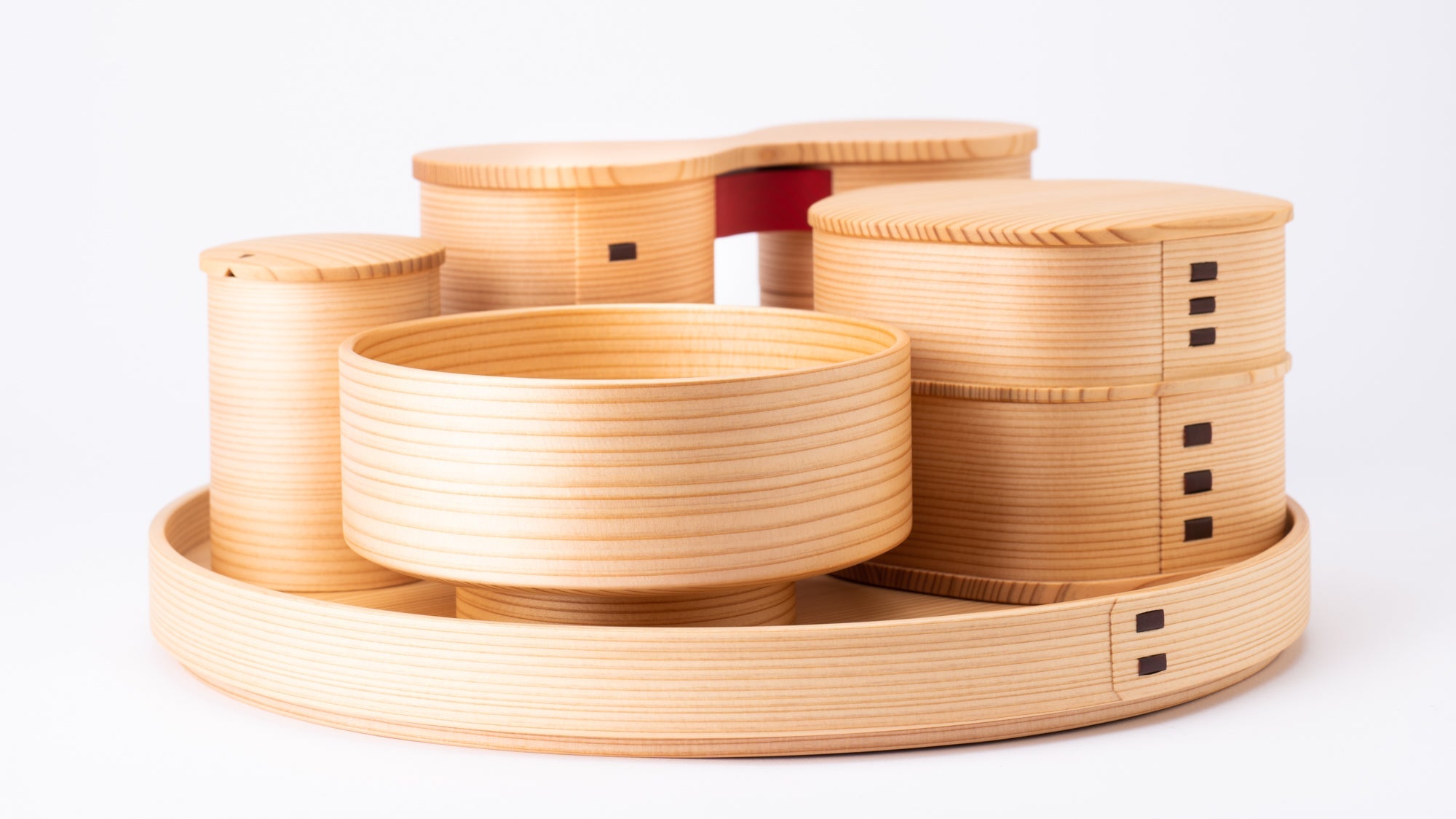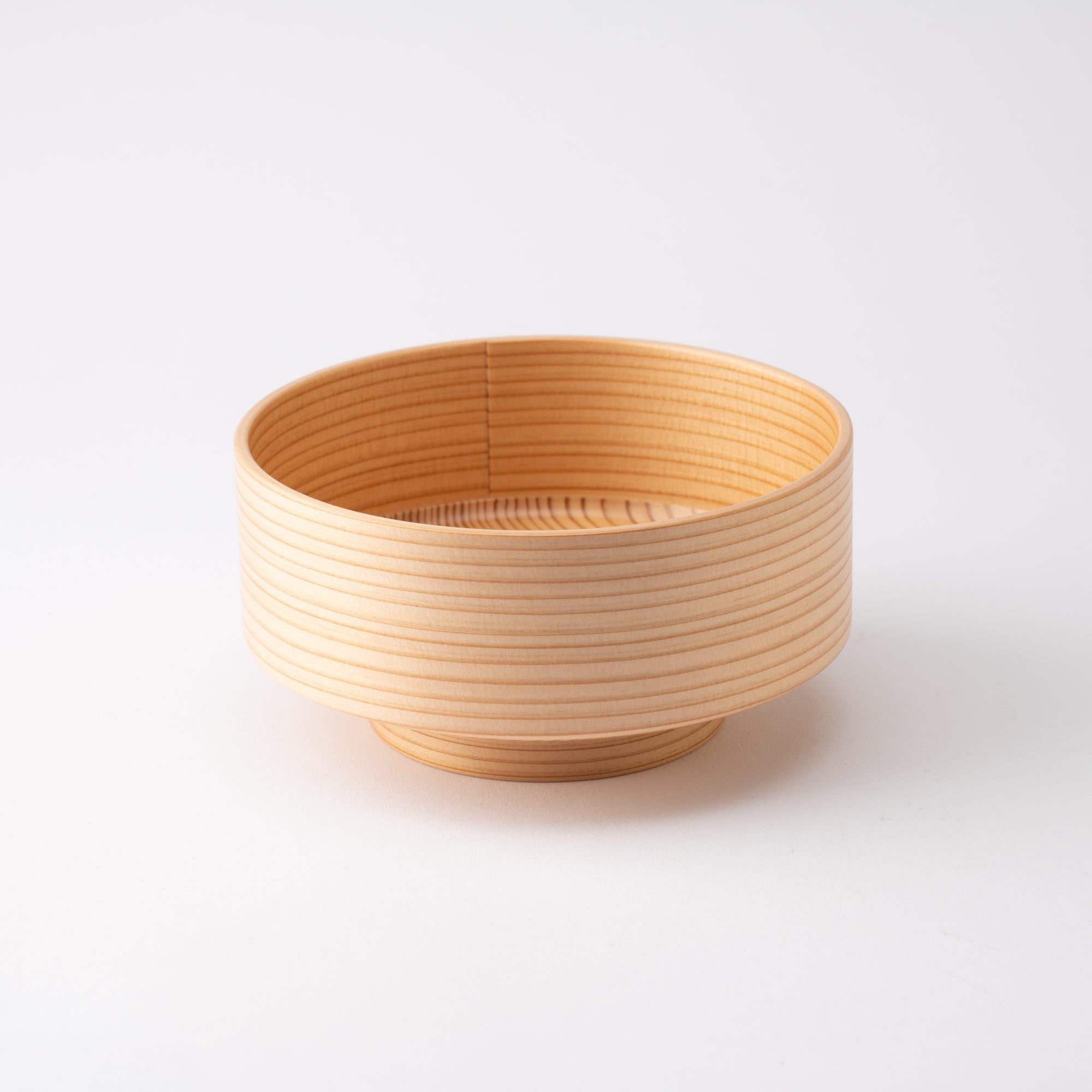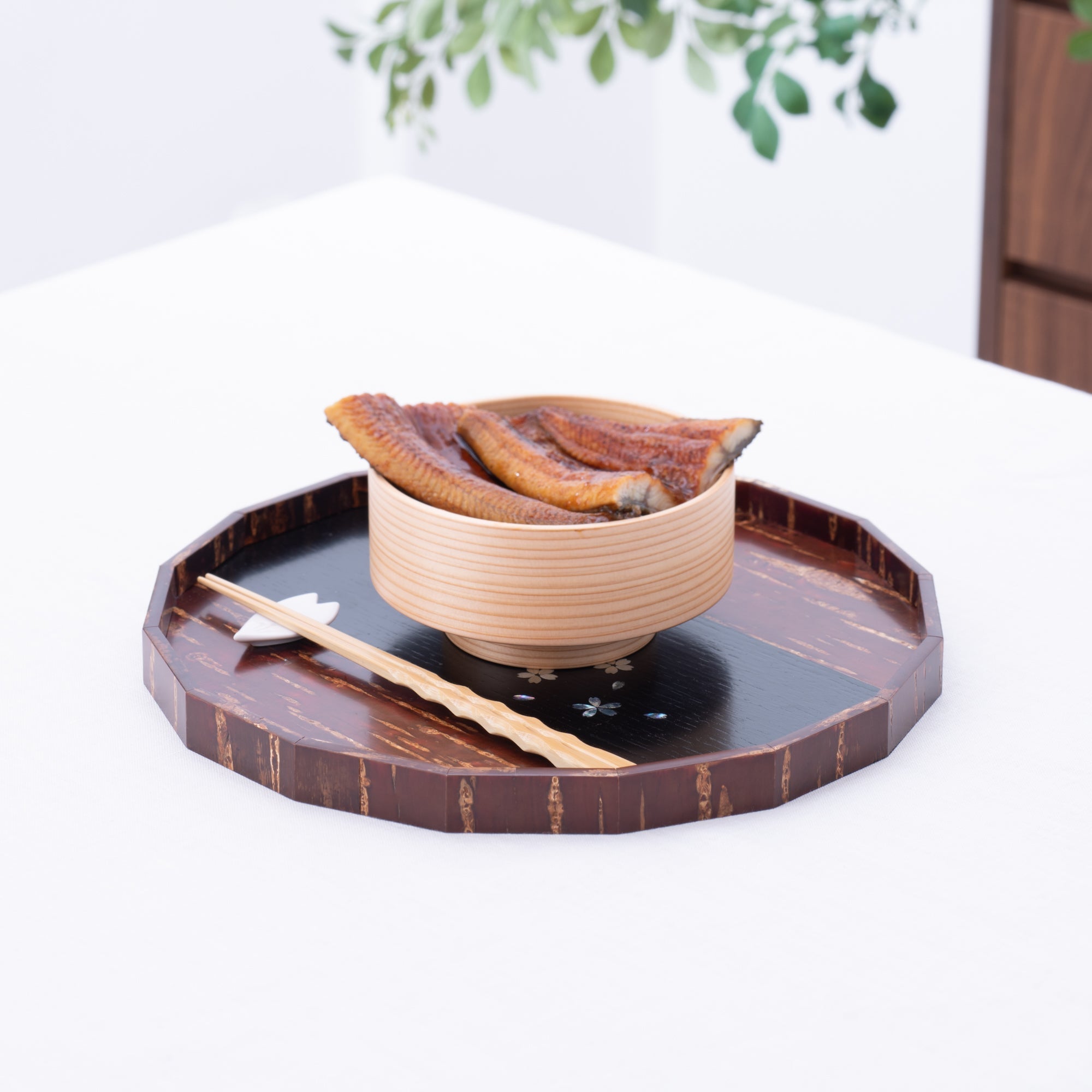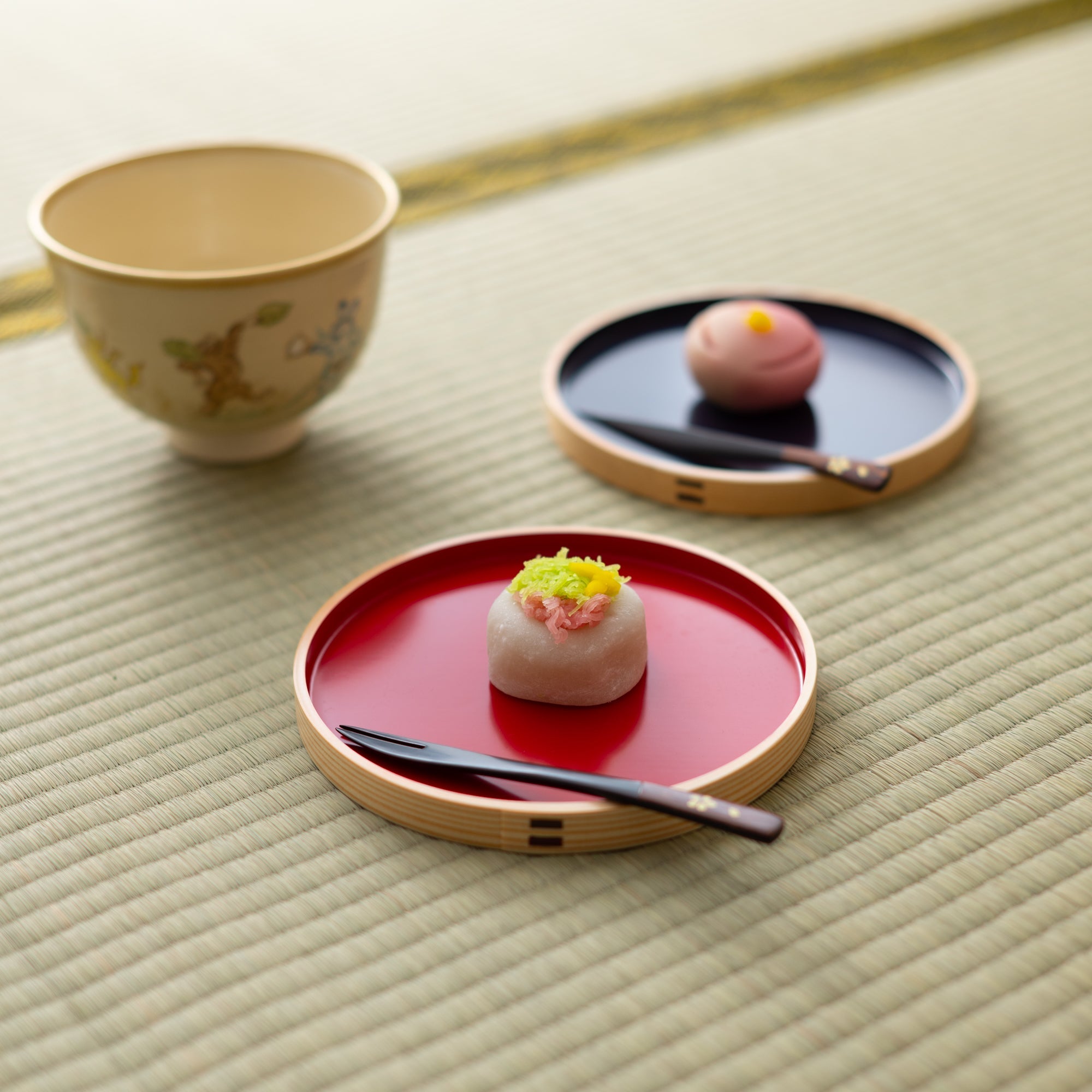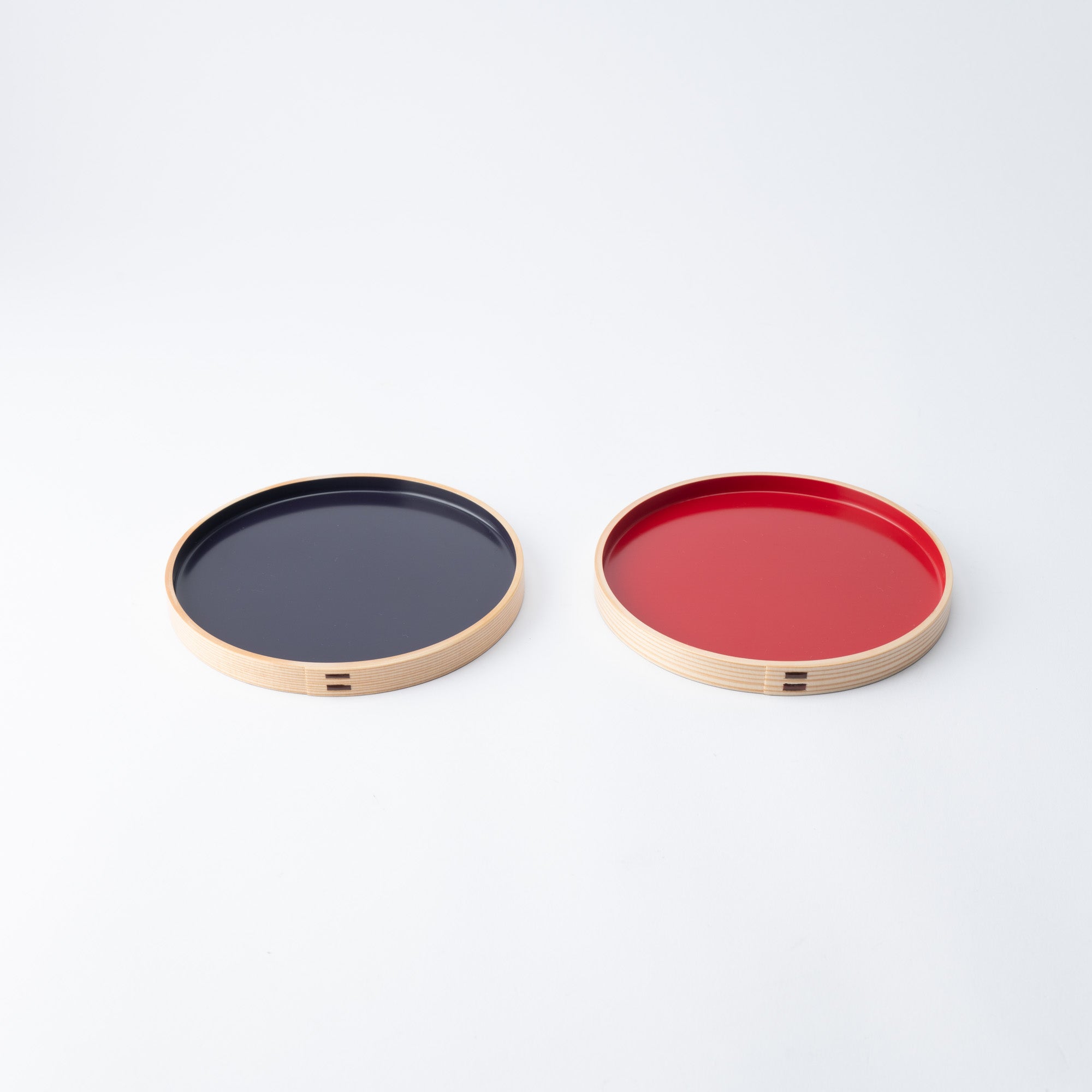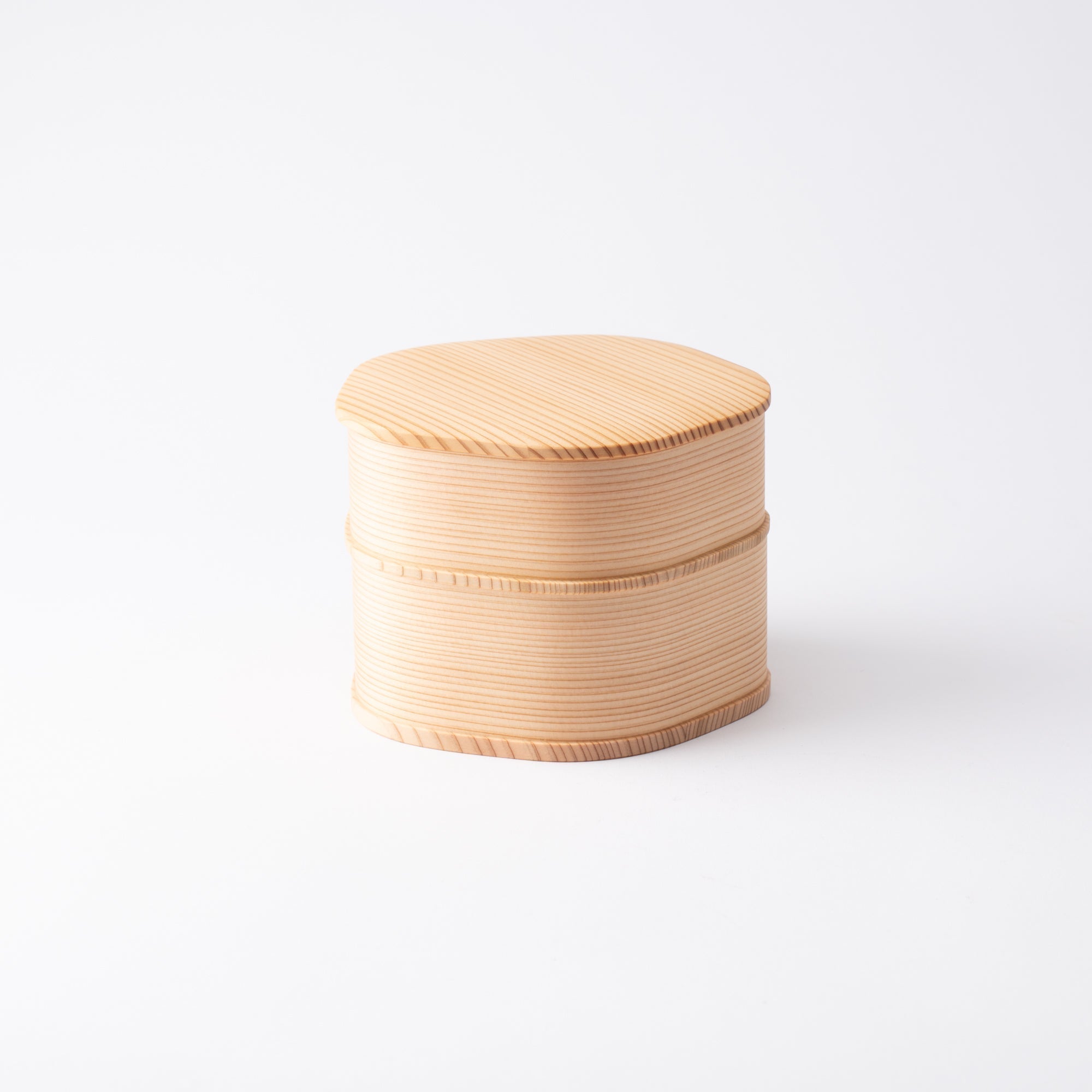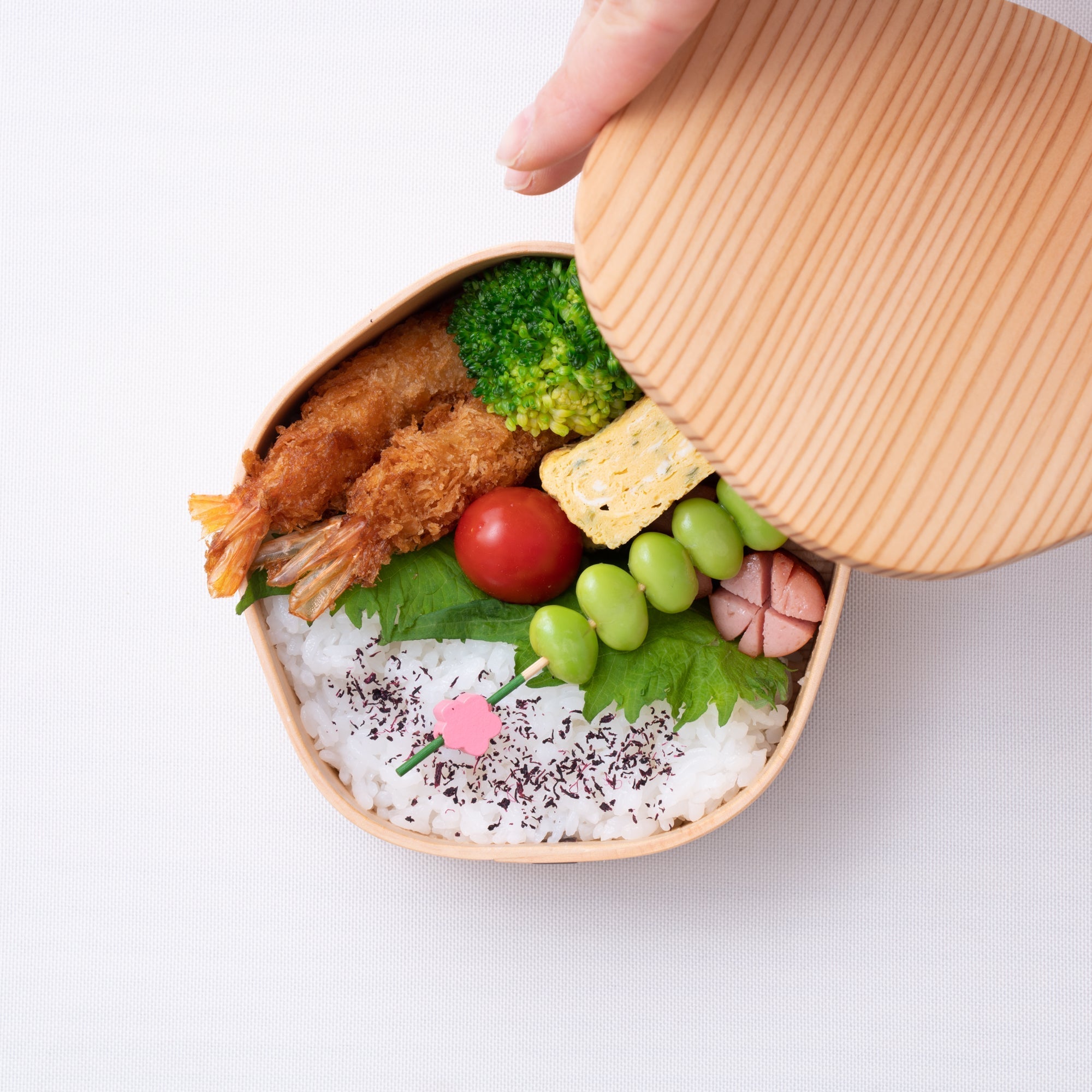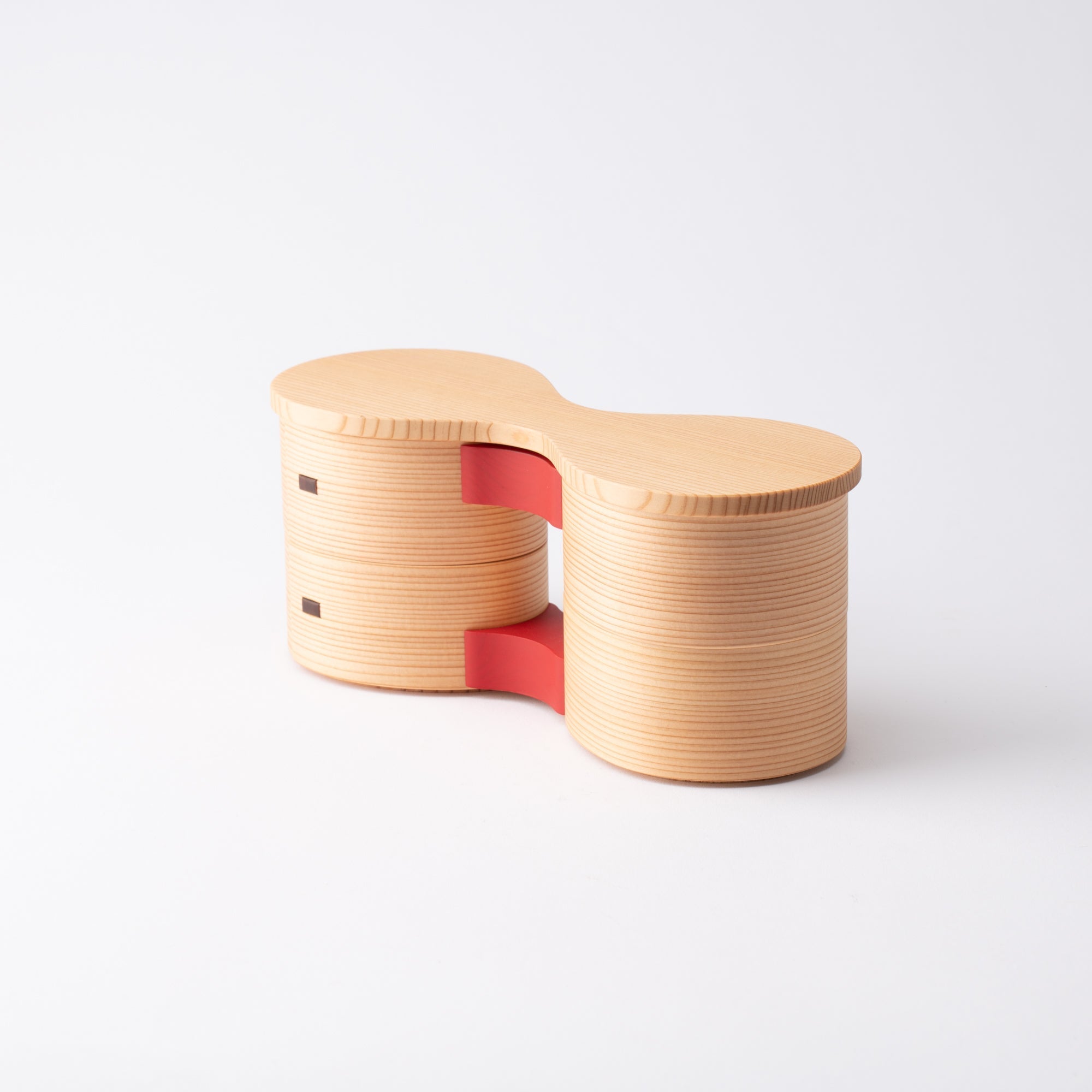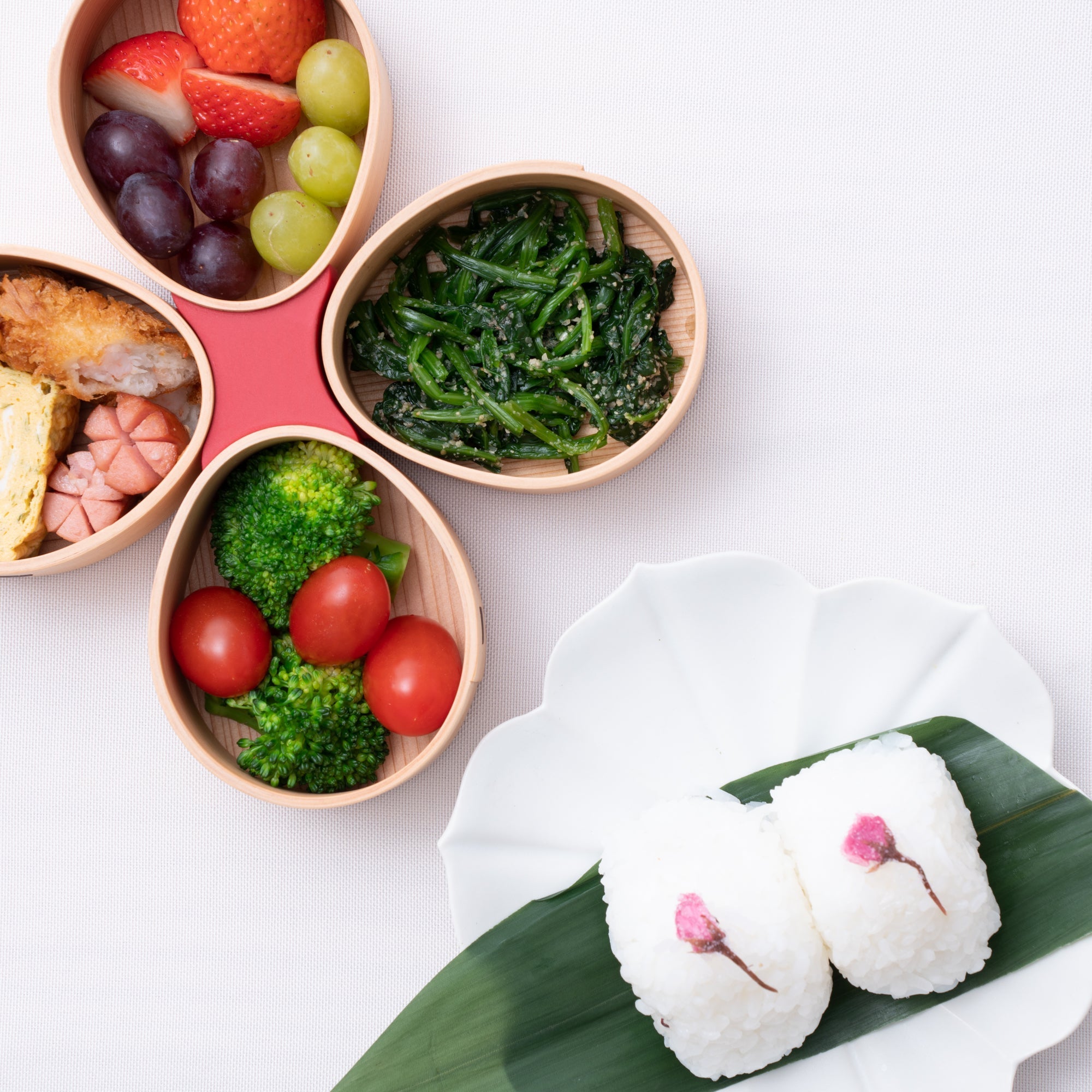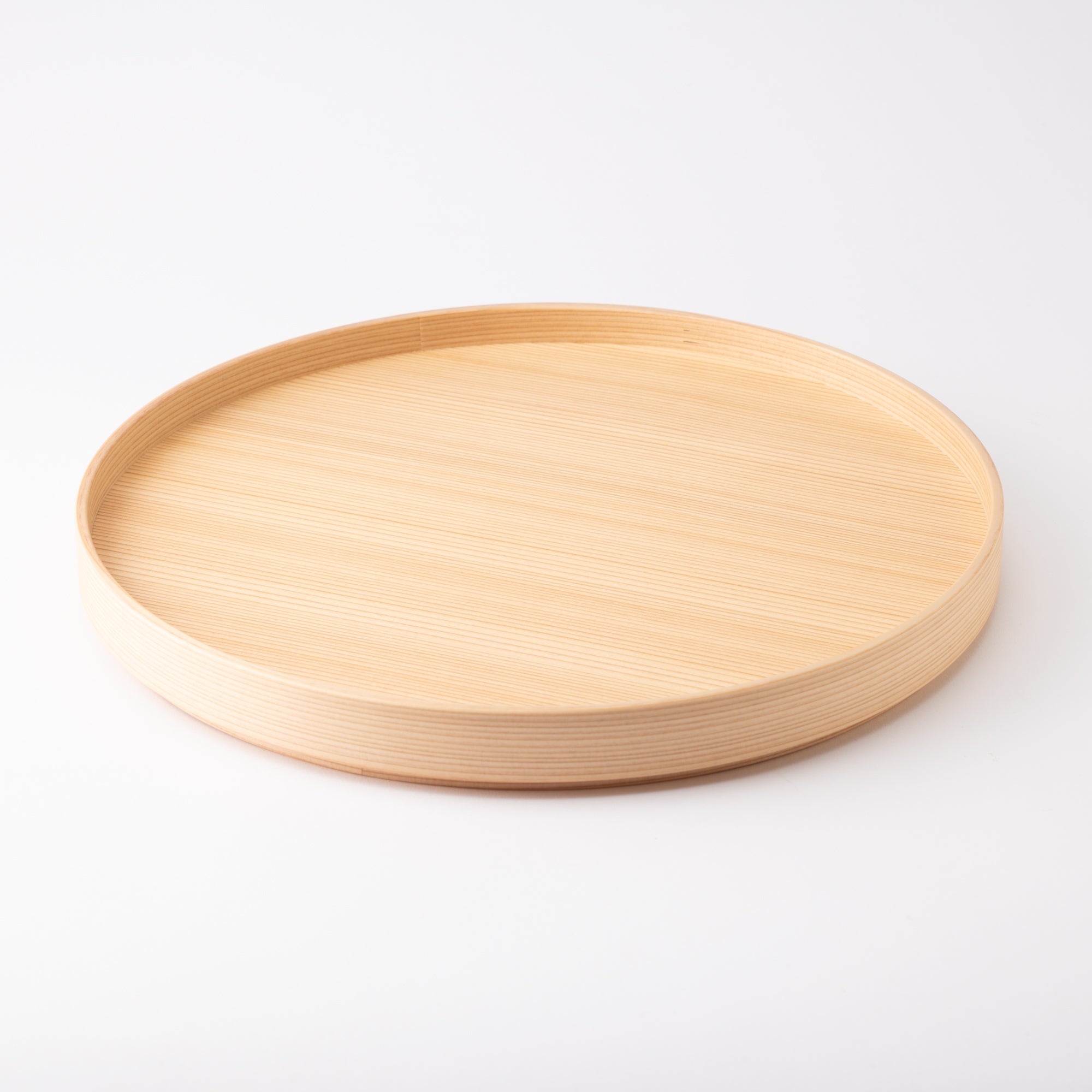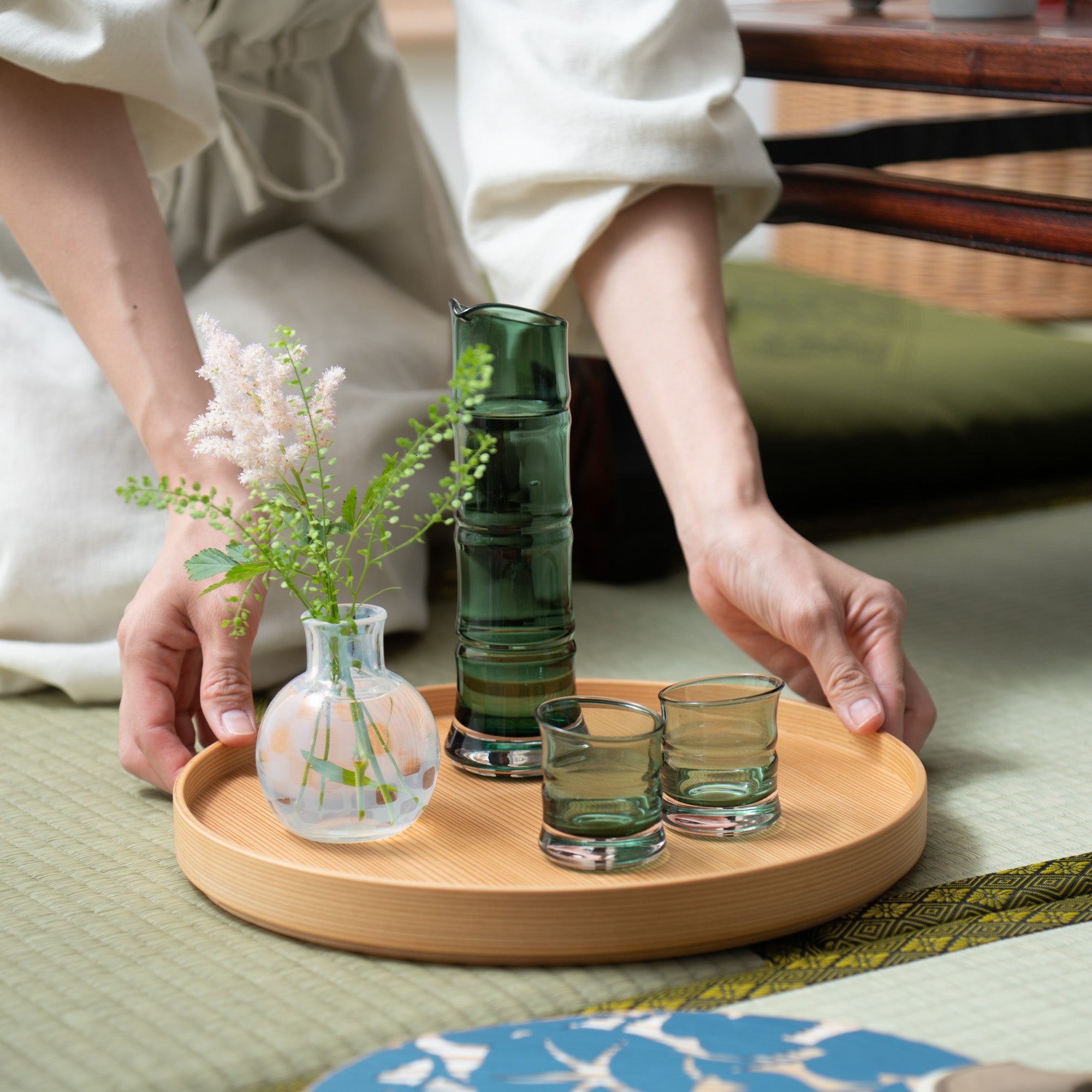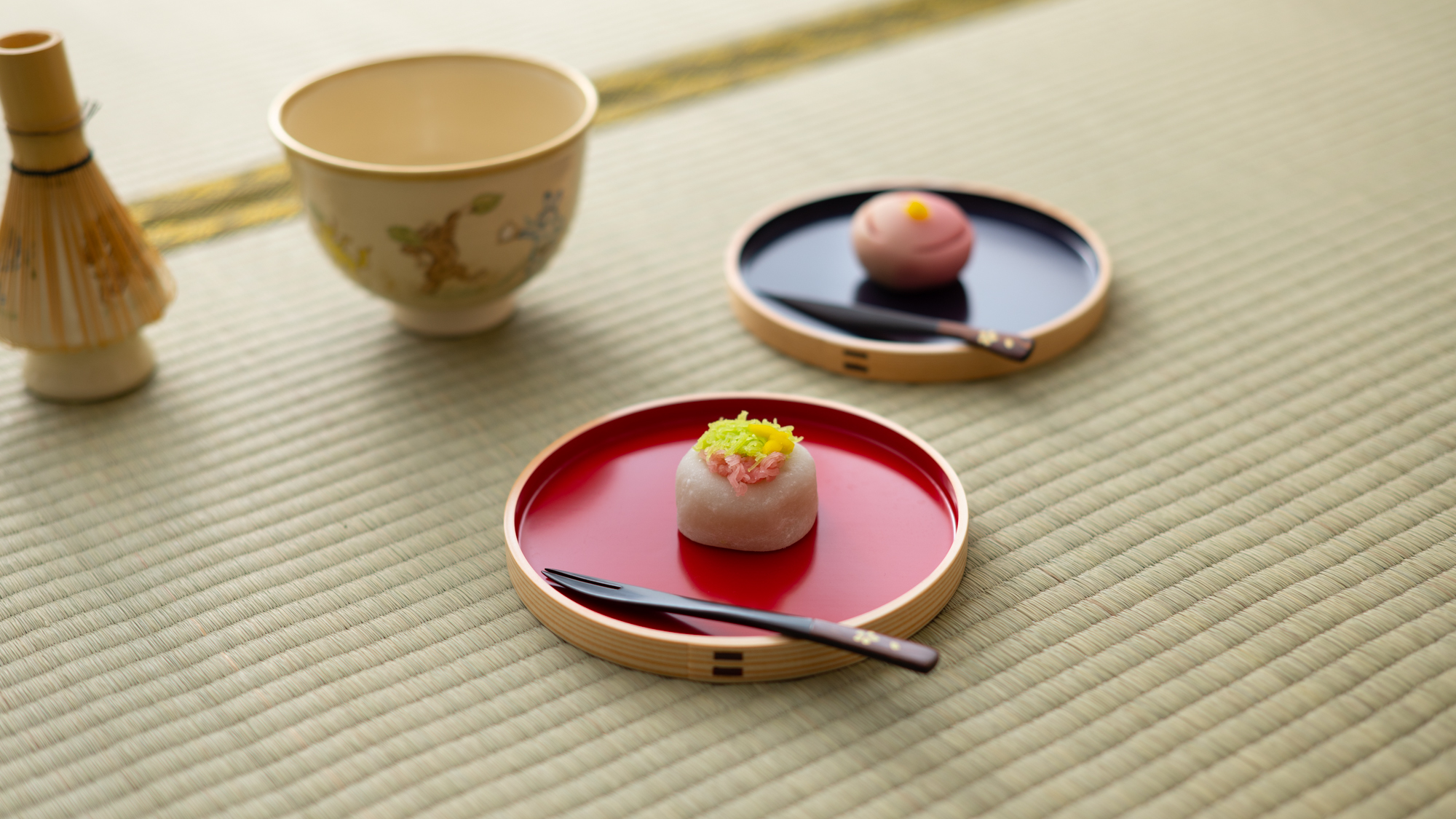
Odate, Akita Japanese Bending Wood
Odate Magewappa
Odate magewappa is a Japanese wood-bending technique that has been carried on in Odate City, Akita Prefecture for 1,300 years. In the late 17th century, it developed as a side job for the lower class samurai of downtown Odate Castle. In 1980, Odate's magewappa was officially designated as a traditional Japanese craft, the only kind to receive this distinction among all magewappa crafts in Japan.
Magewappa are made from thinly sliced Akita cedar or cypress wood, unique to Akita Prefecture, soaked in boiling water to soften it, quickly bent to fit the shape, dried, and then sewn with cherry bark strip to form a loop, and the bottom is fitted without any gaps.
Magewappa is beautiful and lightweight, easy to carry, and has the advantage that the cedar's antibacterial and moisture retention properties keep the rice inside from going bad and keep it tasty. The modern Magewappa is made with a urethane coating to increase durability, which gives the Akita cedar a more elegant sheen and allows it to be washed thoroughly with dishwashing detergent and can be used for many years.
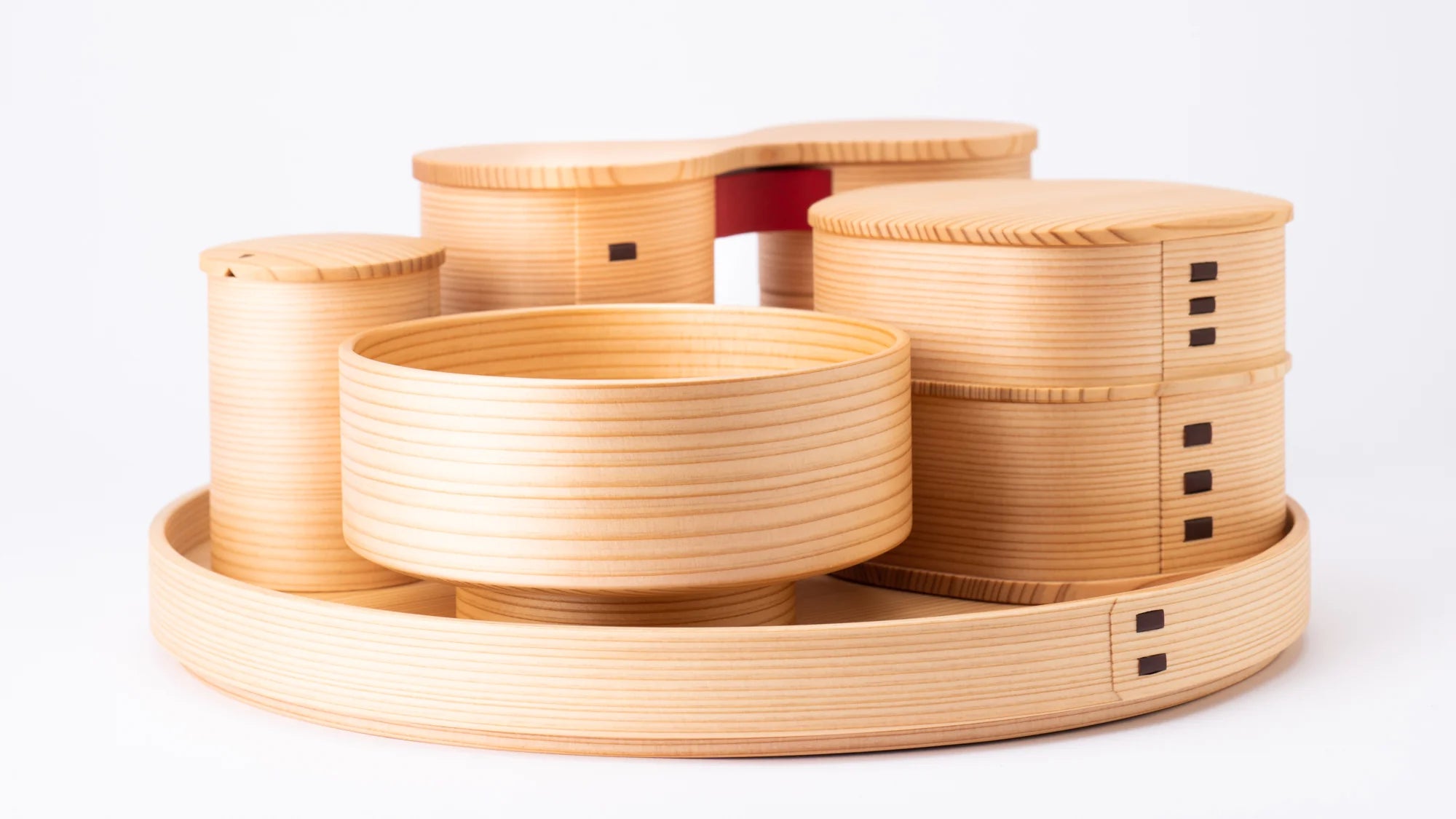
The Japanese bending wood technique sometimes has several similar designations, such as Magewappa, or Magemono, Magewa, etc., which have slightly different meanings.
First, Japanese bending wood techniques are generally referred to as "Magemono." And "Magewappa," refers to the traditional Magemono made in Odate, Akita Prefecture. The term "Magewa" is rarely used, and refers to the ringed part of the Magemono, excluding the bottom, or the technique.
Odate's Magewappa are made of Akita cedar, which is unique to the nature of Akita Prefecture, and are all handcrafted by artisans using techniques that have remained unchanged since the Magemono technique was first established in Japan.
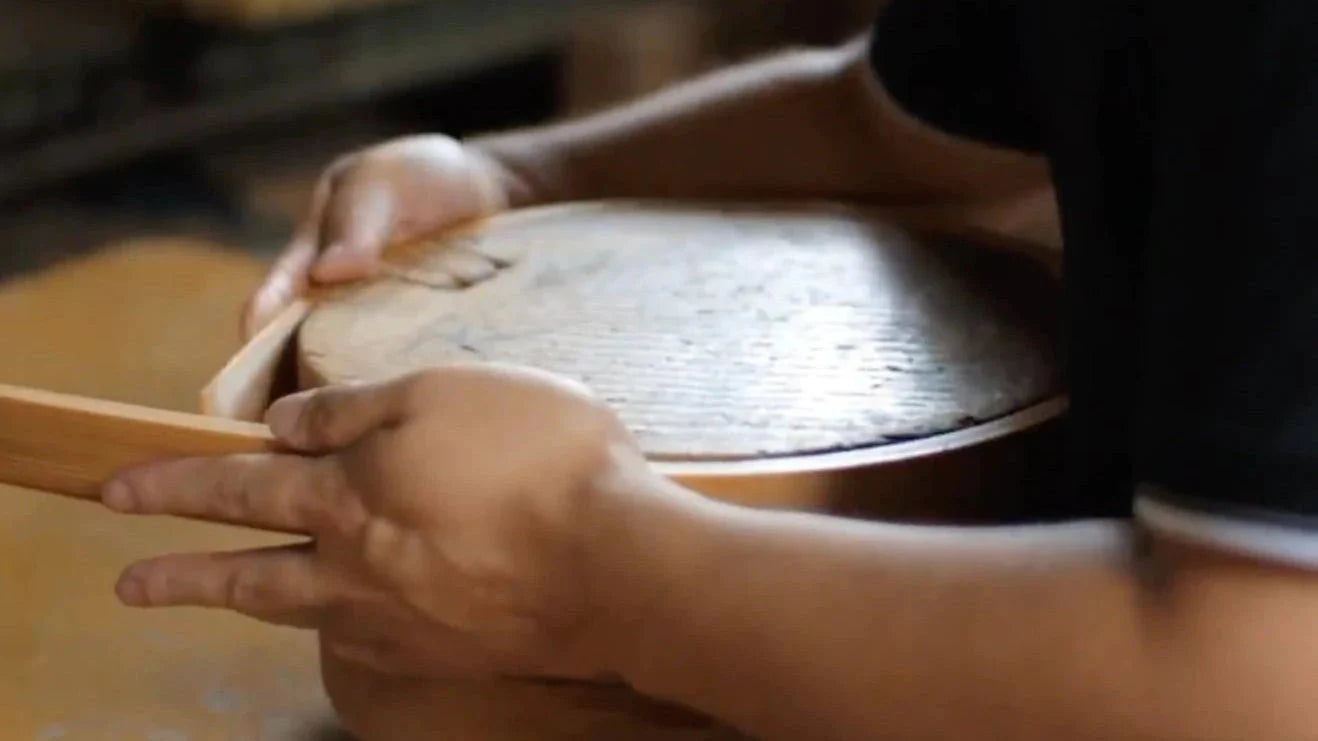
It was about 1,300 years ago that Magemono were made of Akita cedar in Odate City, as they are today. The Odate City Museum has a early Magewappa made in the beginning of the 10th century, which is same in shape to the Magewappa made today. Or, since a container made of zelkova, which appears to be a Magemono, was found among artifacts excavated in 1996 at the Hiratogawa site in Akita City, which dates back to the late Jomon period (about 2,800 years ago), there is a view that the Magemono was already in practical use in the late Jomon period in Japan.
The industry was established in the late 17th century, when the lord of Odate Castle encouraged low-ranking samurai to make magewappa as a side job. Today, Magewappa are made mainly for traditional Japanese products such as bento boxes and tea trays, as well as products that are more in line with the lifestyle of Western culture.
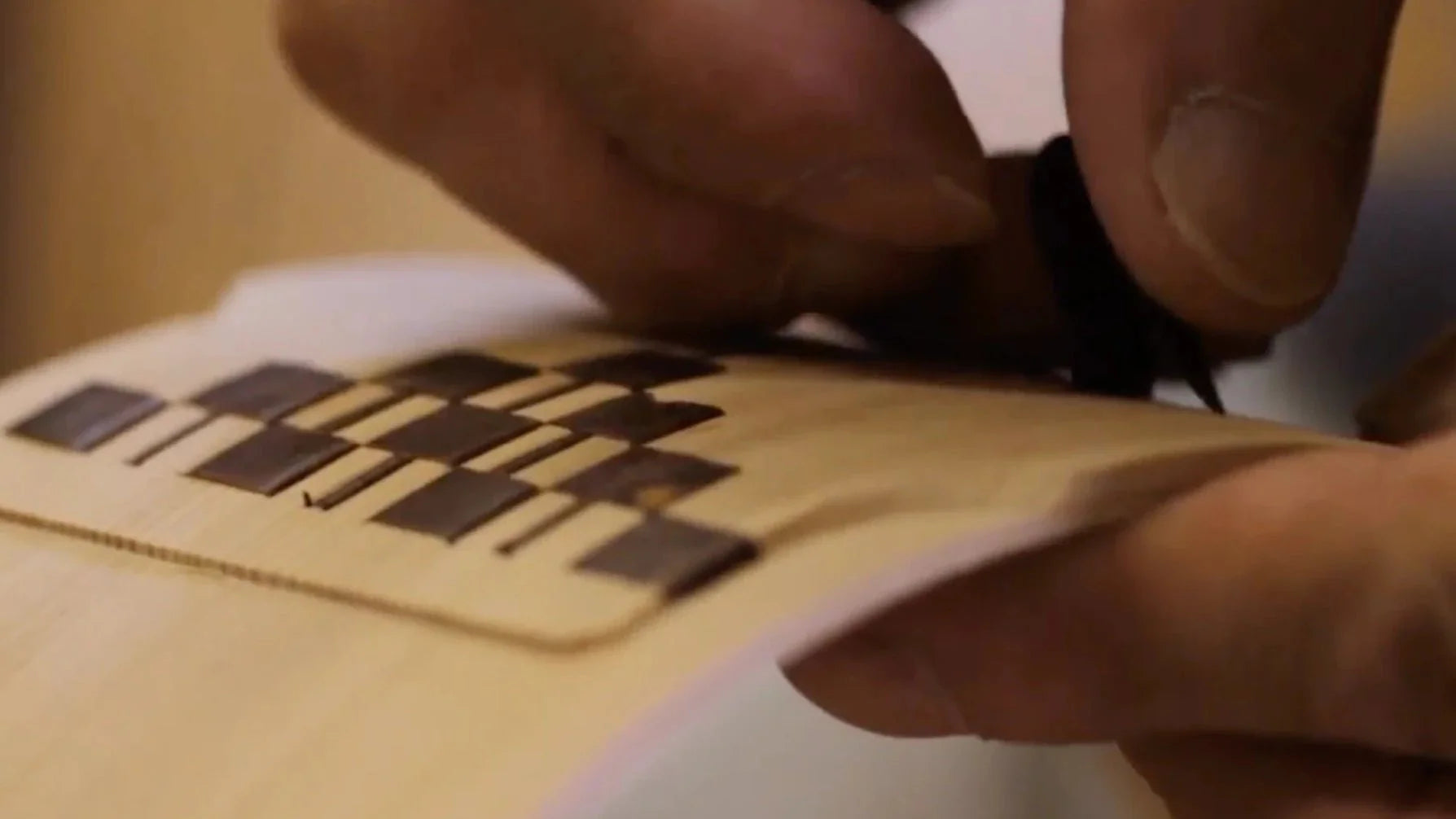
Makers
Related posts
Filters


